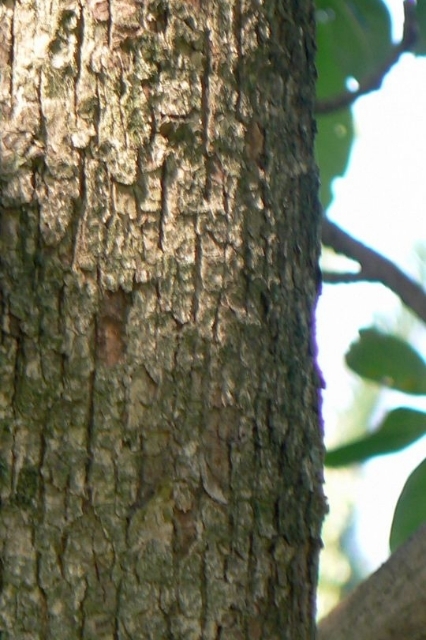605.
Bluebush Diospyros lycioides
umNqandane (Zulu), umBhongisa (Xhosa), Muthala (Venda), moNkga-nku (Sesotho), leHlajwa (Sesotho), bloubos (Afr.)
Order: Ericales. Family: Ebenaceae
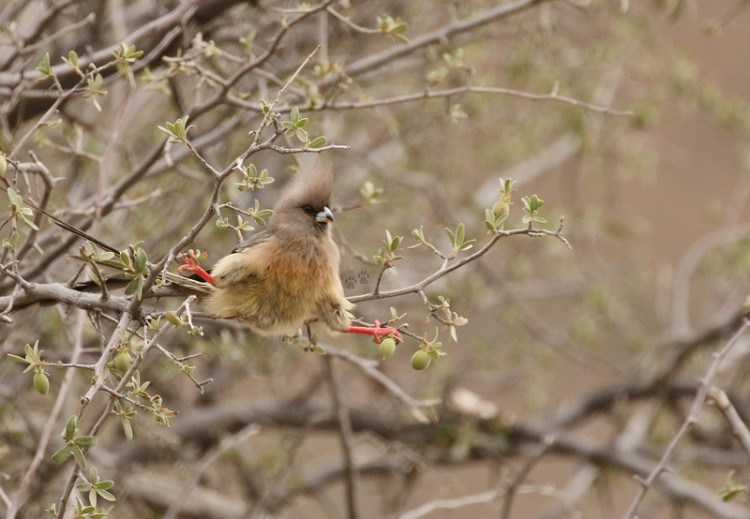
- Diospyros lycioides.jpg (101.29 KiB) Viewed 4055 times
Karoo National Park, March 2016:
Diospyros lycioides ssp.
lycioides, the Karoo Bluebush © nan
Description
A deciduous to evergreen shrub to medium tree up to 5 m tall with an open crown and drooping branches. It may also be a multi-stemmed shrub. The dark grey Bark is and relatively smooth. Young stems are often hairy. Branches grow upright. No milky sap or thorns are present.
It has blue-green leaves arranged spirally at the ends of the branches.
It bears tiny creamy yellow bell-shaped flowers, sweetly fragrant especially at night. The flowers attract lots of insects, especially bees, and also insectivorous bird. It flowers from September to December,
The fruit is a berry (pulpy, indehiscent fruit like a grape or tomato) with a jelly like flesh. It has a short, sharp tip and is almost spherical or ovoid (solid that is an oval in outline). The fruit is up to 2cm long. It turns an attractive red then light brown to black and is hard when mature, losing all its hairs in the process. The fruit contains tannins and is usually avoided by animals until the fruit is ripe and the tannin level decrease. The 5 persistent Calyx lobes are initially green and accrescent. They become folded back and each is eventually up to 1,5cm long. A persistent style may be visible on the young fruit. The mature fruit dehisces slowly and old fruit may remain on the tree until at least the next flowering season. Up to 6 Seeds are produced and each is brown, smooth and has a nearly straight-line groove. (Jan–May).
Distribution
The bluebush is the most widely distributed member of the genus
Diospyros, growing in its various forms all over southern Africa with the exception of the winter-rainfall area of the Cape, parts of Botswana and eastern Namibia.
Habitat
It prefers rocky habitats and well-drained soils, but is also found along stream banks. It can be thicket-forming.
4 subspecies are recognized differing mainly in leaf form and distribution:
– subsp.
lycioides (Karoo bluebush): shrub or small tree up to 7 m tall; branchlets spreading at right angles or slightly ascending at the ends, occasionally spinescent; leaves crowded towards the tips, blade up to 4 cm × 1.5 cm, glabrous or slightly velvety, lateral veins not raised. It is mainly found in Botswana, Zimbabwe and the drier parts of Namibia and South Africa, in riparian forest and thicket at 600–1000(–2700) m altitude.
– subsp.
guerkei (quilted bluebush, eastern bluebush, Natal bluebush): shrub or small tree up to 5 m tall; branchlets ascending, not spinescent; leaves not crowded, blade 2–5 cm × 1–2 cm, distinctly net-veined. It occurs in Botswana and north-eastern South Africa, in rocky habitats, often associated with quartzite outcrops, from sea-level up to 2150 m altitude.
– subsp.
nitens (silvery bluebush): small, multi-stemmed shrub up to 1.5 m tall; leaf blade small, up to 2 cm × 1 cm, densely covered with silvery hairs. It occurs in north-eastern South Africa, in dry, hot bushveld, grasslands and rocky outcrops, from sea-level up to 1550 m altitude.
– subsp.
sericea (eastern bluebush, Kalahari star apple, hairy bluebush, Natal bluebush): shrub or small tree up to 7 m tall; branchlets usually ascending, with the leaves inserted more or less evenly along their length, rarely spinescent; leaf blade up to 8 cm × 3 cm, densely hairy. It is distributed from Upper Shaba in DR Congo and Angola southwards to Namibia and eastern Cape Province in South Africa, occurring from sea-level up to 2000 m altitude in bushland and thicket, especially on riverbanks and termite mounds and in rocky locations, sometimes at edges of riparian forest or forming secondary thickets following over-grazing.
Links:
https://treesa.org/diospyros-lycioides/
http://pza.sanbi.org/diospyros-lycioides
https://uses.plantnet-project.org/en/Di ... es_(PROTA)
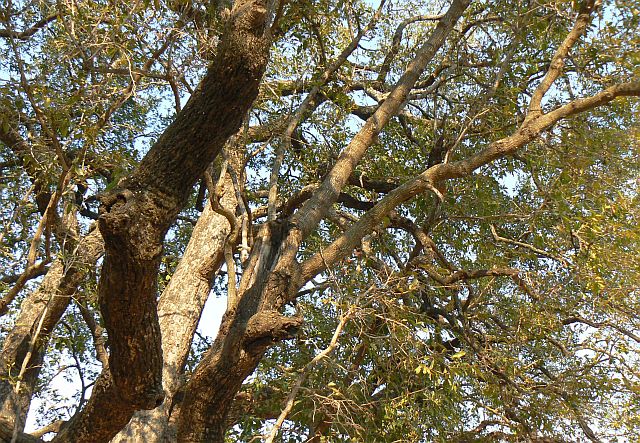

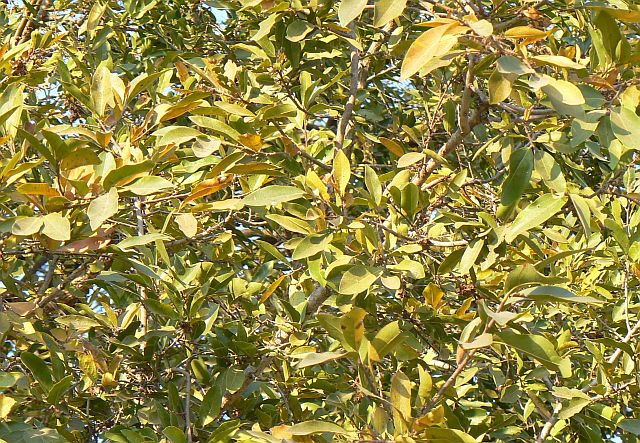
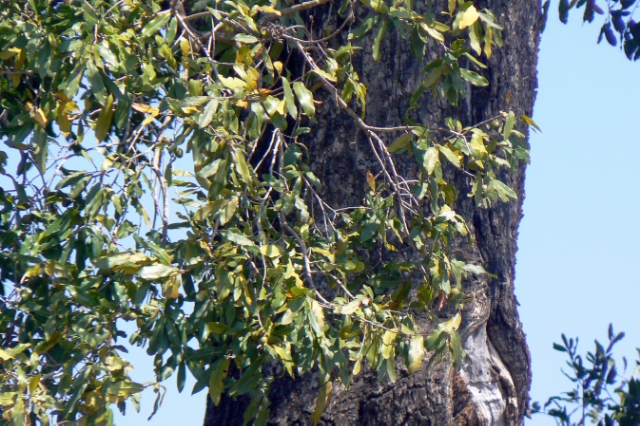

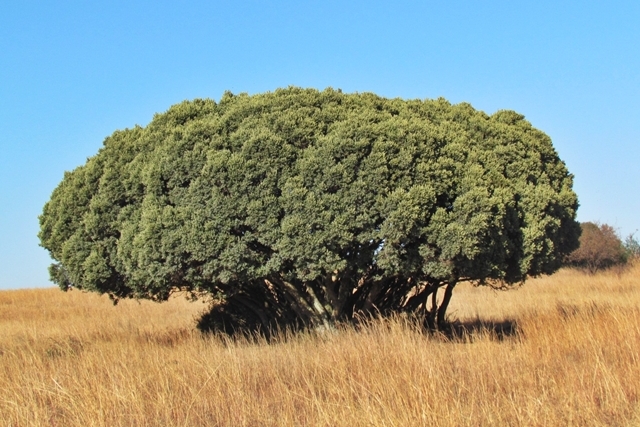 © Flutterby
© Flutterby © leachy
© leachy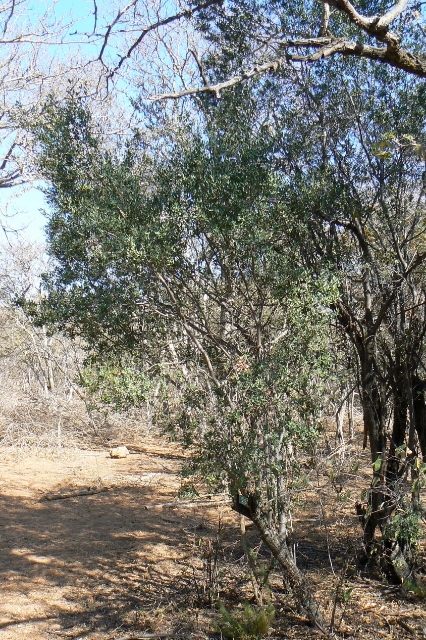


 © Toko
© Toko